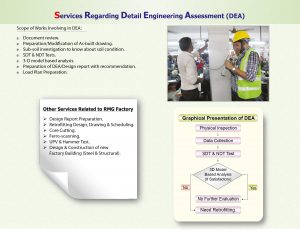Structural Integrity–R.C.C.&Steel Structures
VEC has successfully completed a large number (65+ RMG-Factories, Residential & Commercial Building) of Structural Detail Engineering Assessment (DEA) Architectural and Structural design.
Detail Engineering Assessment (DEA) process as per the Alliance, Accord, NI, BNBC standard:
Essential Information and steps for Detail Engineering Assessment (DEA)
Architectural and Structural design DEA Steps:
- 1. Prepare As-built Architectural+Structural drawing, if not available already. The as-built drawing shall show:
- The structural, non-structural elements with dimensions at all levels, foundations and framing on the plan, section and elevation.
- Cross-sectional drawings showing reinforcements in foundations, columns, beams, slabs, etc.
- If as-built drawings are available–verify if it truly represents the structure.
- The as-built drawing shall be prepared/checked as per Alliance standard 8.19and/or8.20.
- Scanning of rebars in main structural elements of lower tiers (SeeAPD.5) to confirm as-built condition.
- Arrange confirmatory soil test(2/3borings)
- A spot check of the foundation by excavation, if necessary
- Identify causes of any physical distress, dampness or any other abnormalities and suggest remedial measures.
- Work on specific terms of concern identified by the QAF in the initial structural assessment report
- Identify any overloading, additions, extensions, presence of water tanks, towers. Study their effect on the structure and suggest remedial measures.
- Arrange for core test by taking 4 Nos. 4in. cores (see details in APD.5, D.17) to assess in situ strength. Use ACI 562 to find 𝒇′𝒆𝒒 to be used in design checking.
- Prepare structural model as per As-built drawing using appropriate software by following the standard practice and building code.
- Obtain reliable data on steel grade or arrange to test of steel rebar (if possible) or assume 40grade conservatively for using in all analysis/design adequacy.
- Use loading and Load factors as per standard (NTC/Alliance)
- Check strength and serviceability requirements as per BNBC-2006
- Make recommendation(s) based on results of DEA–including restriction of loading, restriction on the vertical extension.
- In case of deficiency in the structural integrity of the structure(s), the appropriate retrofitting scheme is to be designed.
- Prepare Load Plan and arrange to post of load plan and approve it.
- DEA Deliverables:
- Approved As-built structural architectural drawings.
- DEA Report with the following items:
- Highlight any variation between as built and designed structure (if known)
- Results of testing for strength and materials
- Results of geotechnical investigation
- Details of loading, inputs, and results of computer modeling
- Commentary on adequacy/inadequacy of elements of the structure
- Schedule of any required retrofitting required for safety or safe performance of a structure
- If applicable, retrofitting scheme design with detail working drawings and design assumptions/notes
- Approved Load plans.
-
Our DEA process :
-
Detail Engineering Assessment (DEA):
- Assessment Procedure
- Resources Management
- Assessment Procedure:
- Physical observation
- Investigative studies
- Inferences
- Strengthening Measures
- Concluding remarks
- a) Physical observation
- Any sign of settlement
- Any sign of distress in any key structural elements
- Any kind of dampness/standing water.
- Any kind of corrosion.
- Any kind of twisting/rupture/ sagging in the structural members.
- Any other defects in any structural elements.
- Current loading condition in the structure (at each floor)
- b) Investigative studies
- Dimensional measurement of structural members
- Testing:
- SDT:
- Semi-Destructive test to access of in-situ concrete in RC footings, Columns, Beams and slabs
- NDT:
- Ultrasonic pulse velocity test on RC columns and beams
- Rebound Hammer test on RC slabs
- Cover meter studies to map the disposing and dia of peripheral rebars in RC members
- Theoretical analysis to verify the structural adequacy of existing members for present level loading
- SDT:
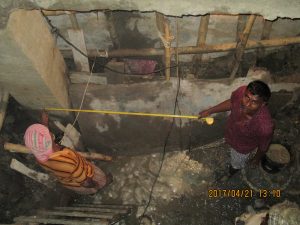
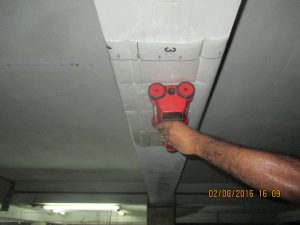
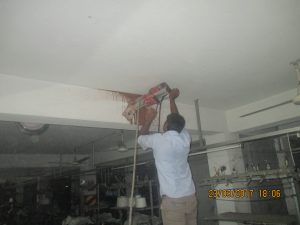
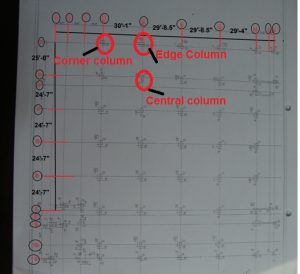
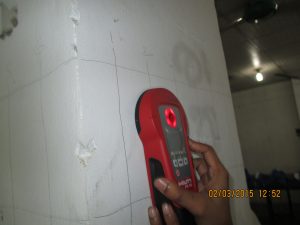
- c) Inferences
- Inferences based on the above investigative studies.
- d) Strengthening Measures
- Retrofitting scheme.
- e) Concluding Remarks
- Recommendation(s) based on results of DEA–including restriction of loading, restriction on the vertical extension.
- 2. Resources Management:
- Six members required in each DEA team and they will divide into four groups under one team leader.
- Group A:
- Member:
- Structural engineer
- CAD operator
- Responsibilities:
- Dimensional measurement of structural members.
- Prepared as-built Structural drawing.
- Group B:
- Member:
- Structural engineer.
- Two labors from the client end.
- Responsibilities:
- Semi-Destructive test (core samples) to access of in-situ concrete in RC footings, Columns, Beams and slabs.
- Ultrasonic pulse velocity test on RC columns and beams.
- Group C:
- Team leader
- Structural engineer
- Architectural and Structural Responsibilities :
- Cover meter studies to map the disposing and dia of peripheral rebars in RC members.
- Rebound Hammer test on RC slabs.

